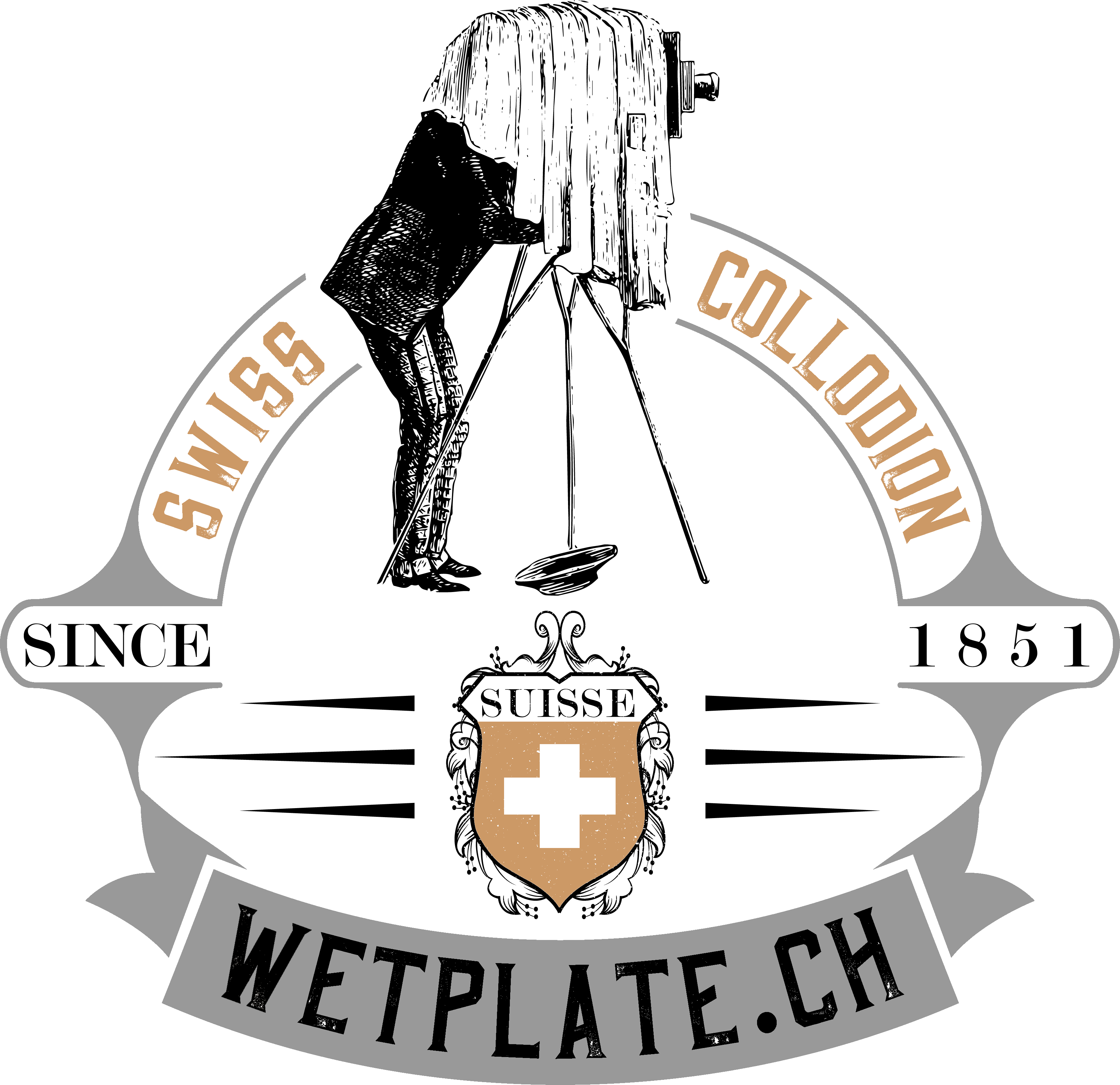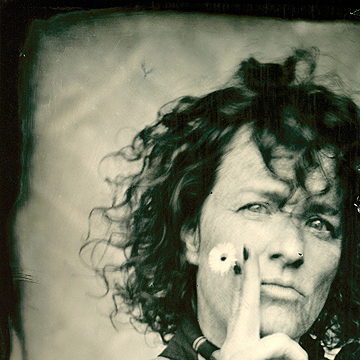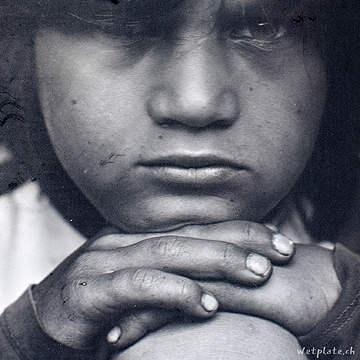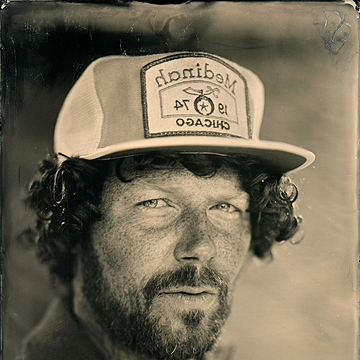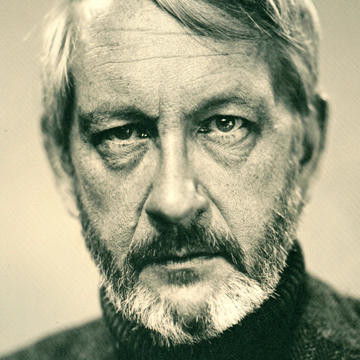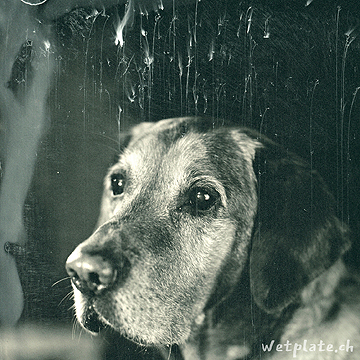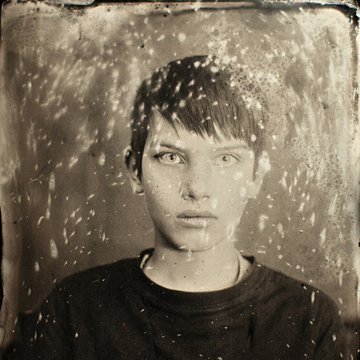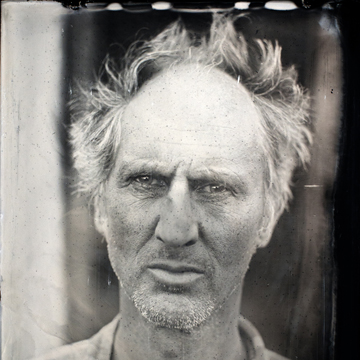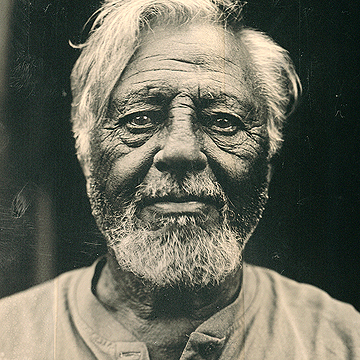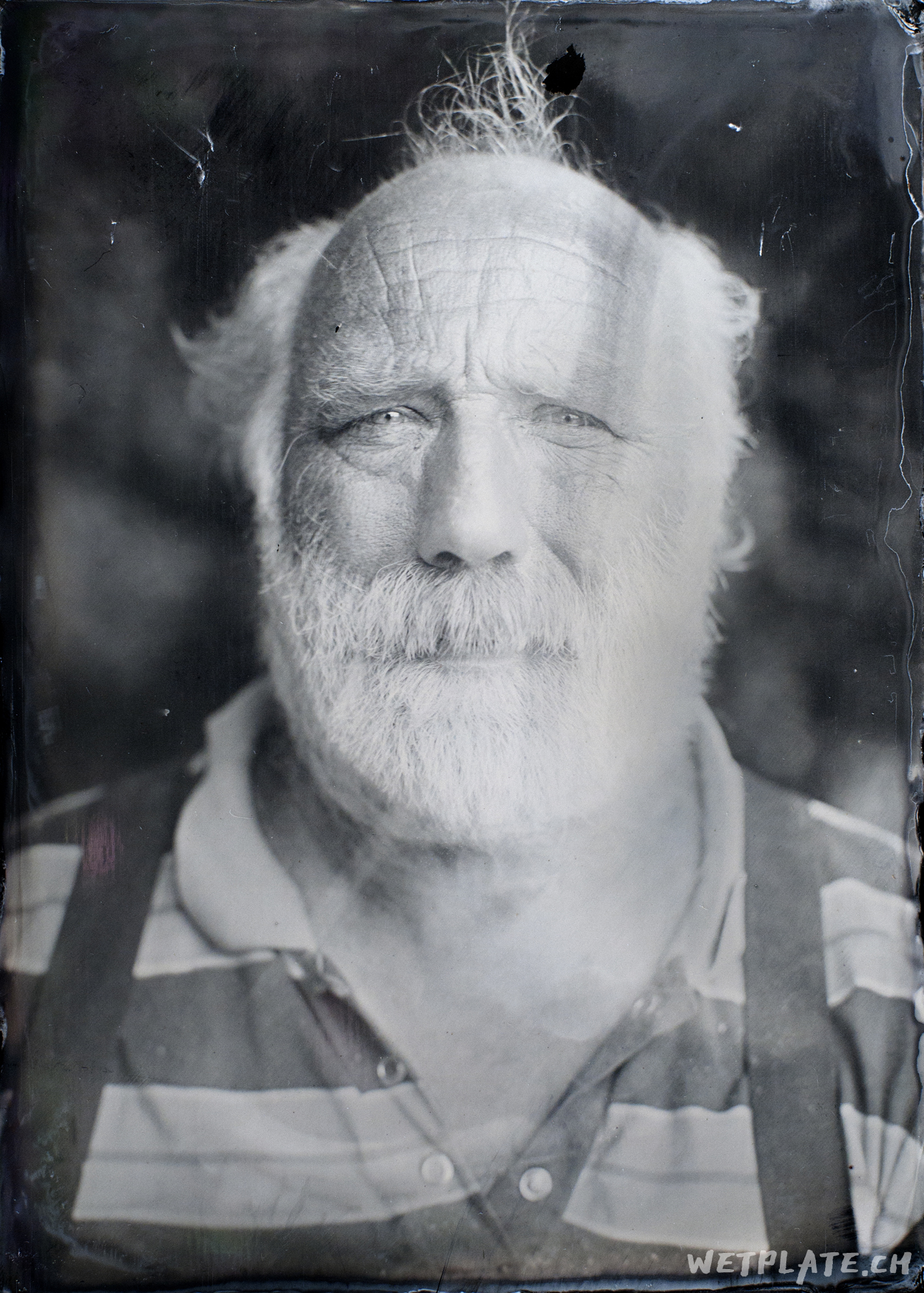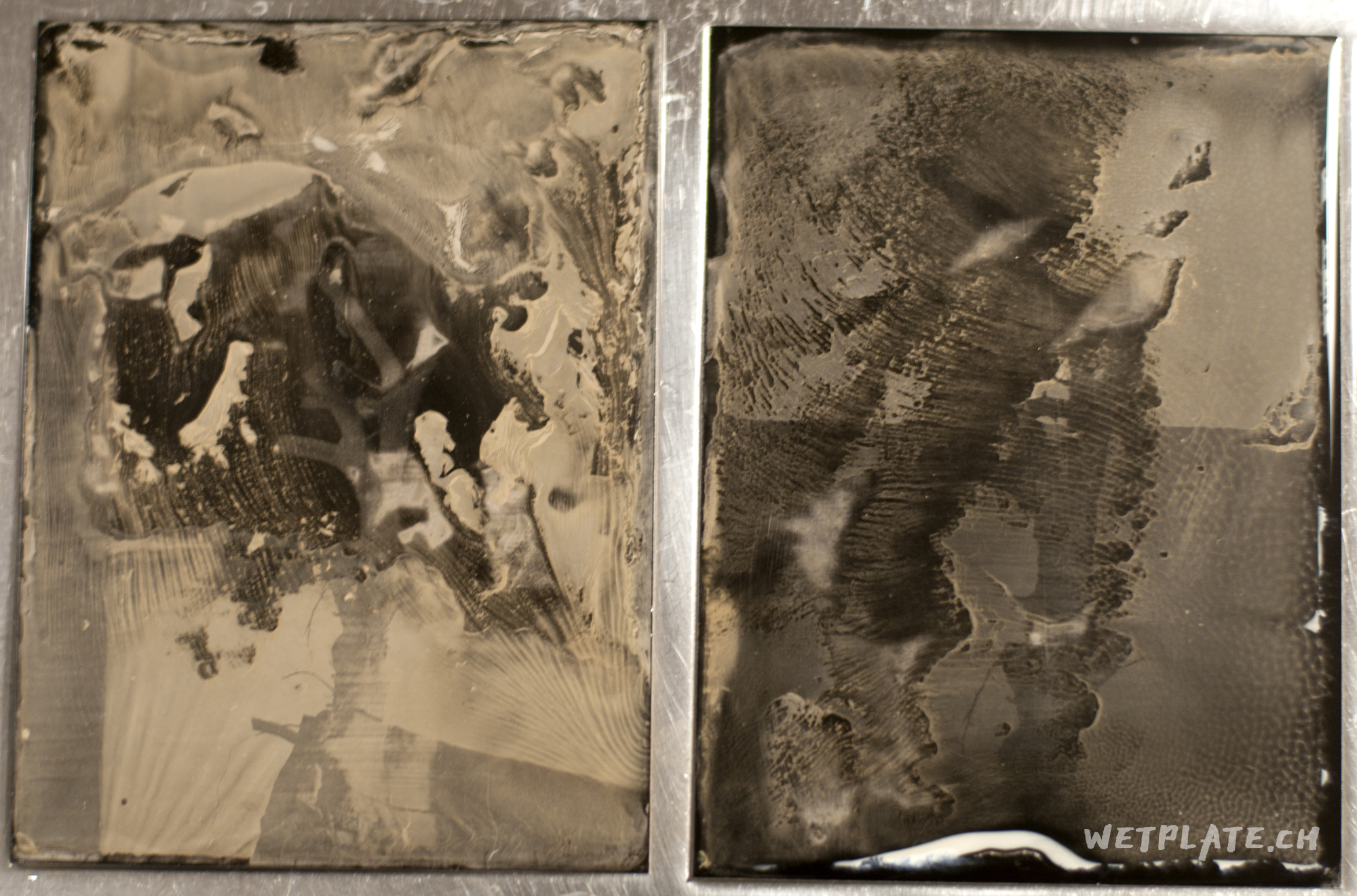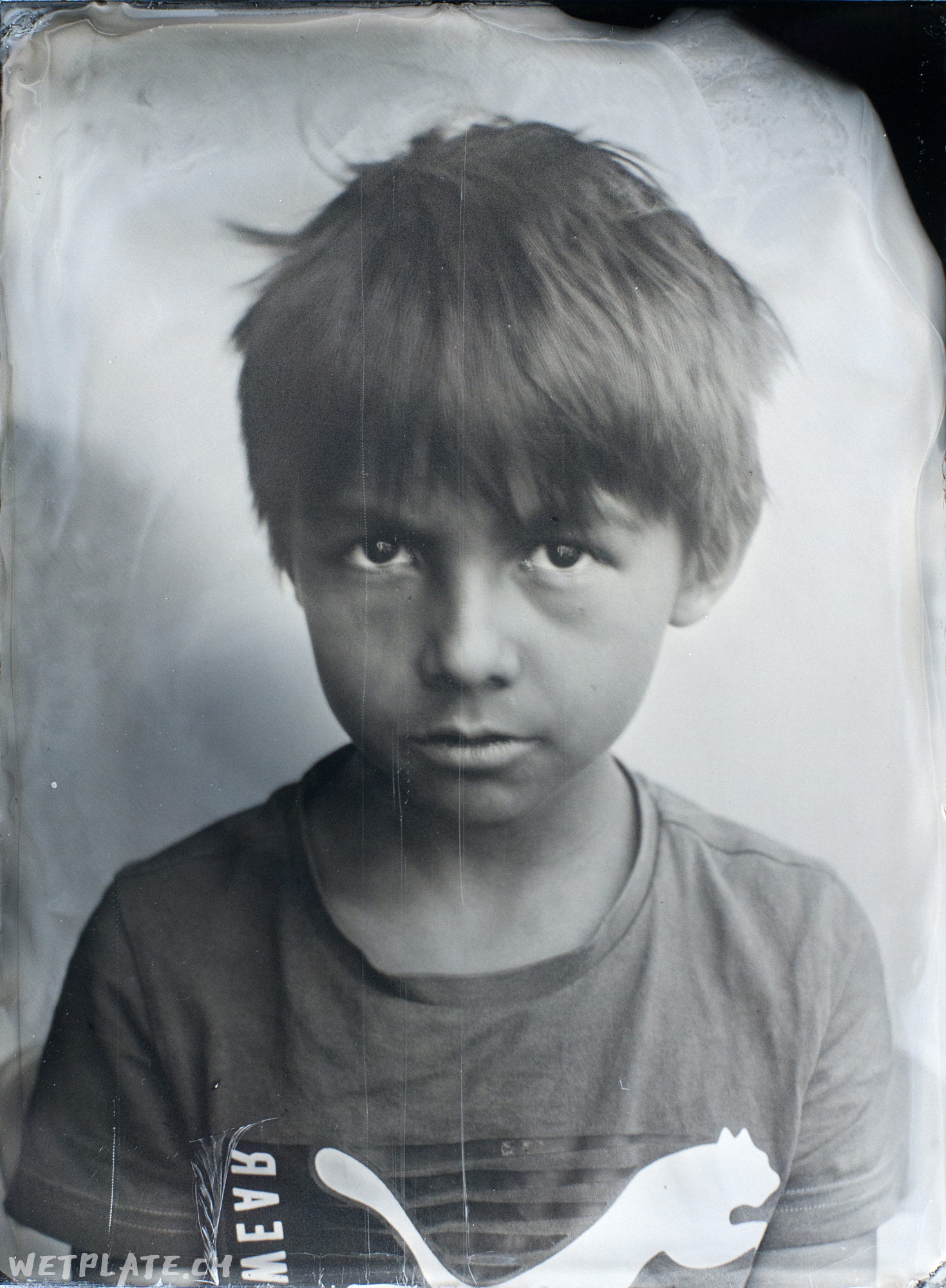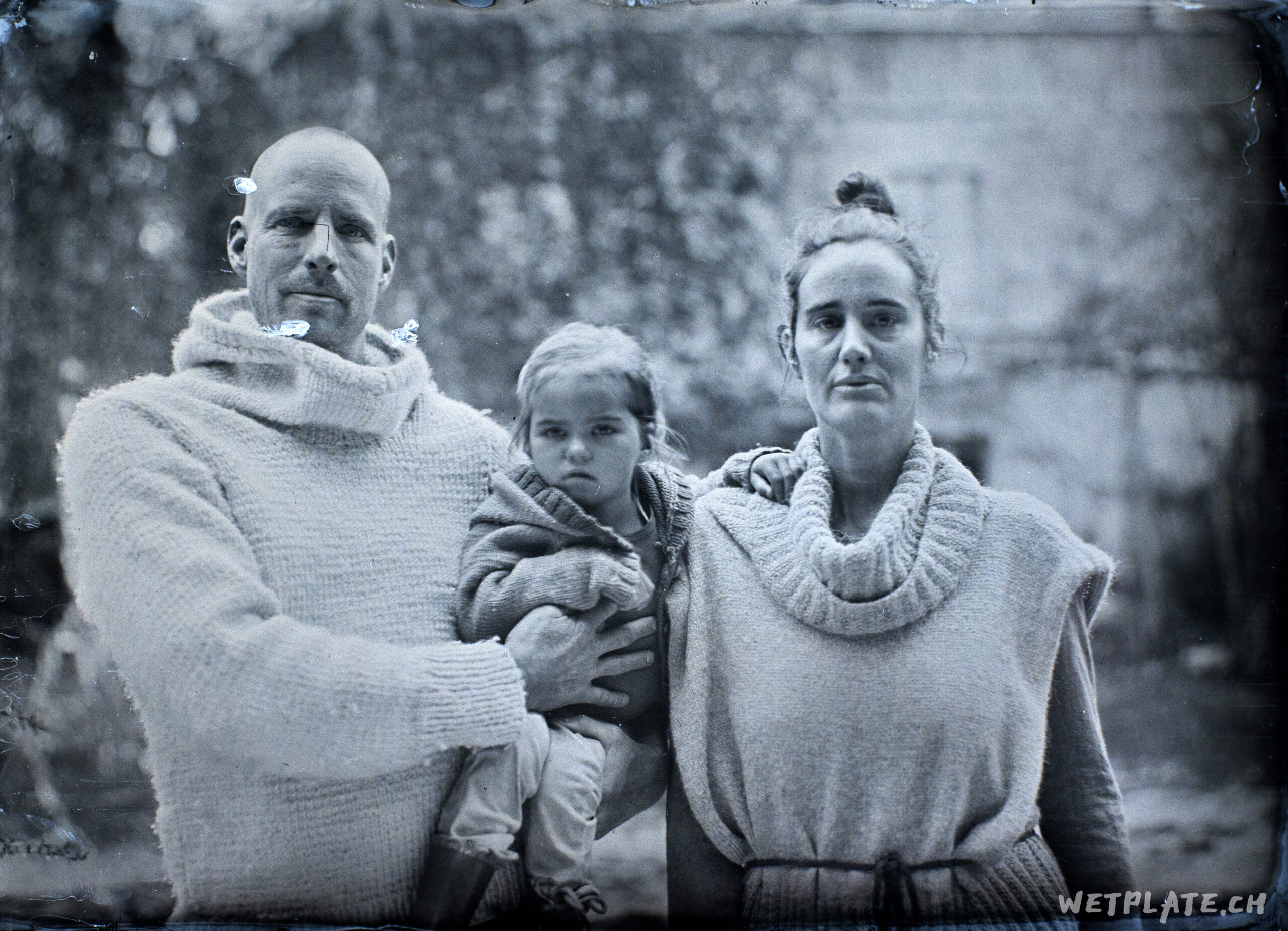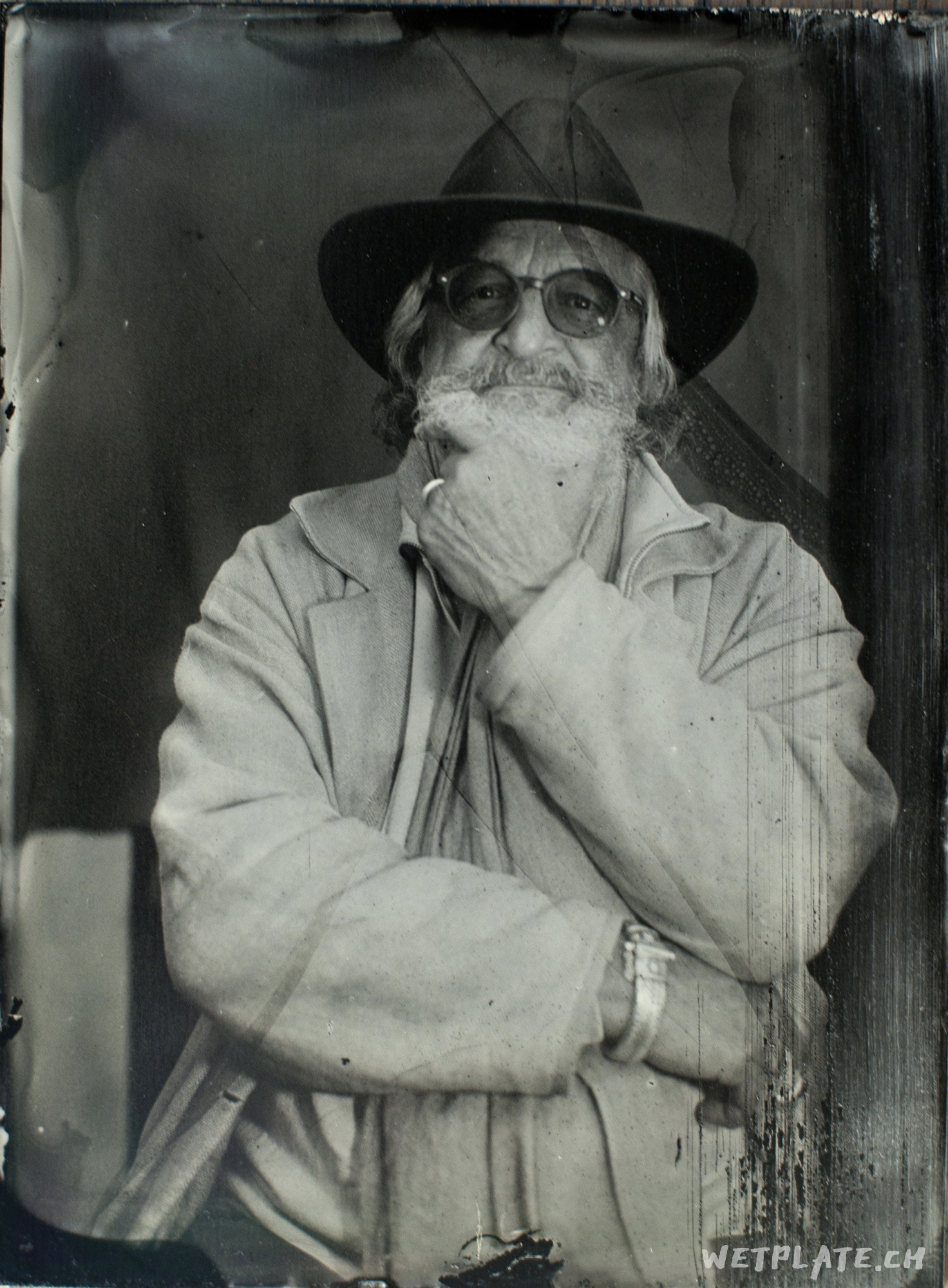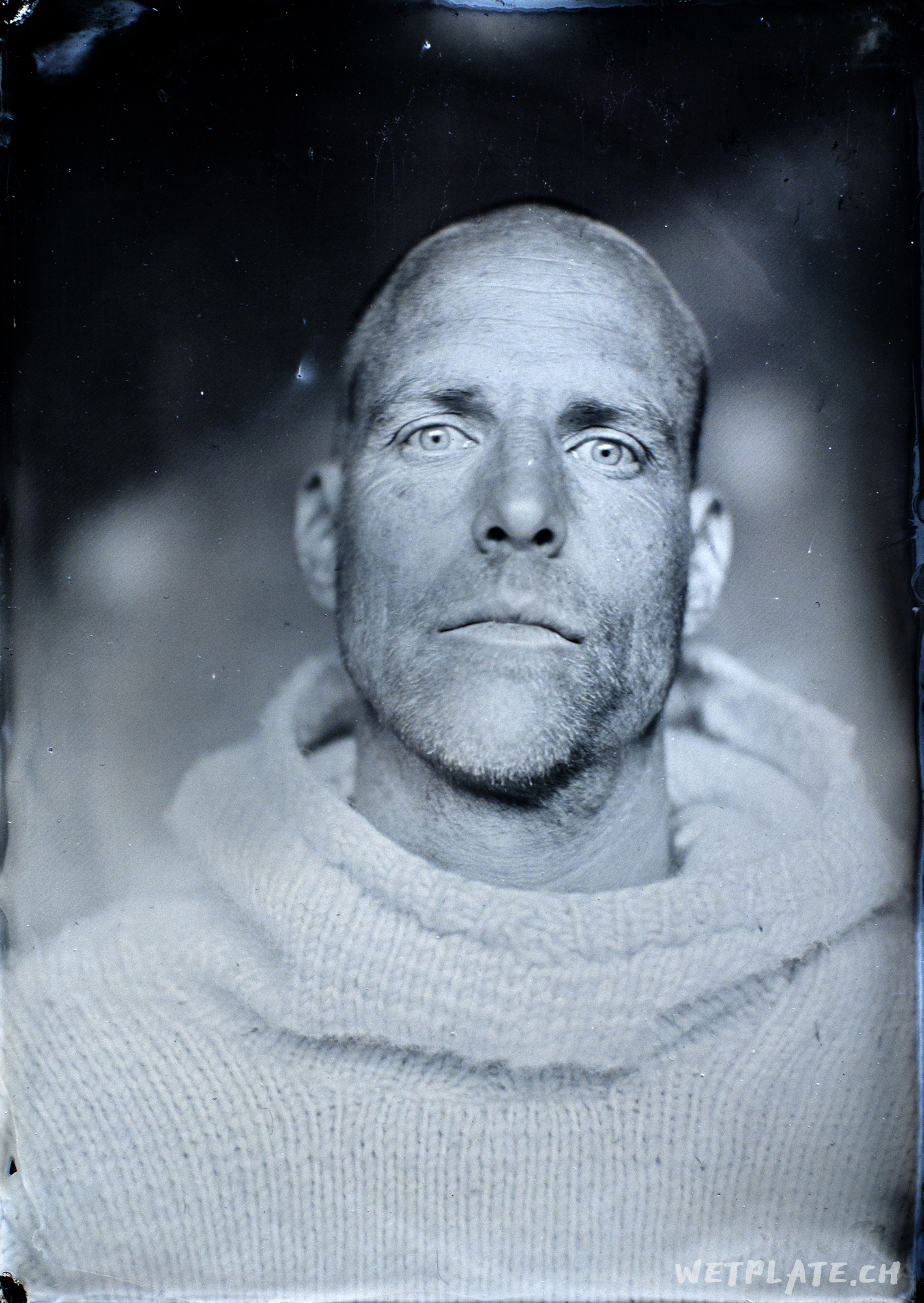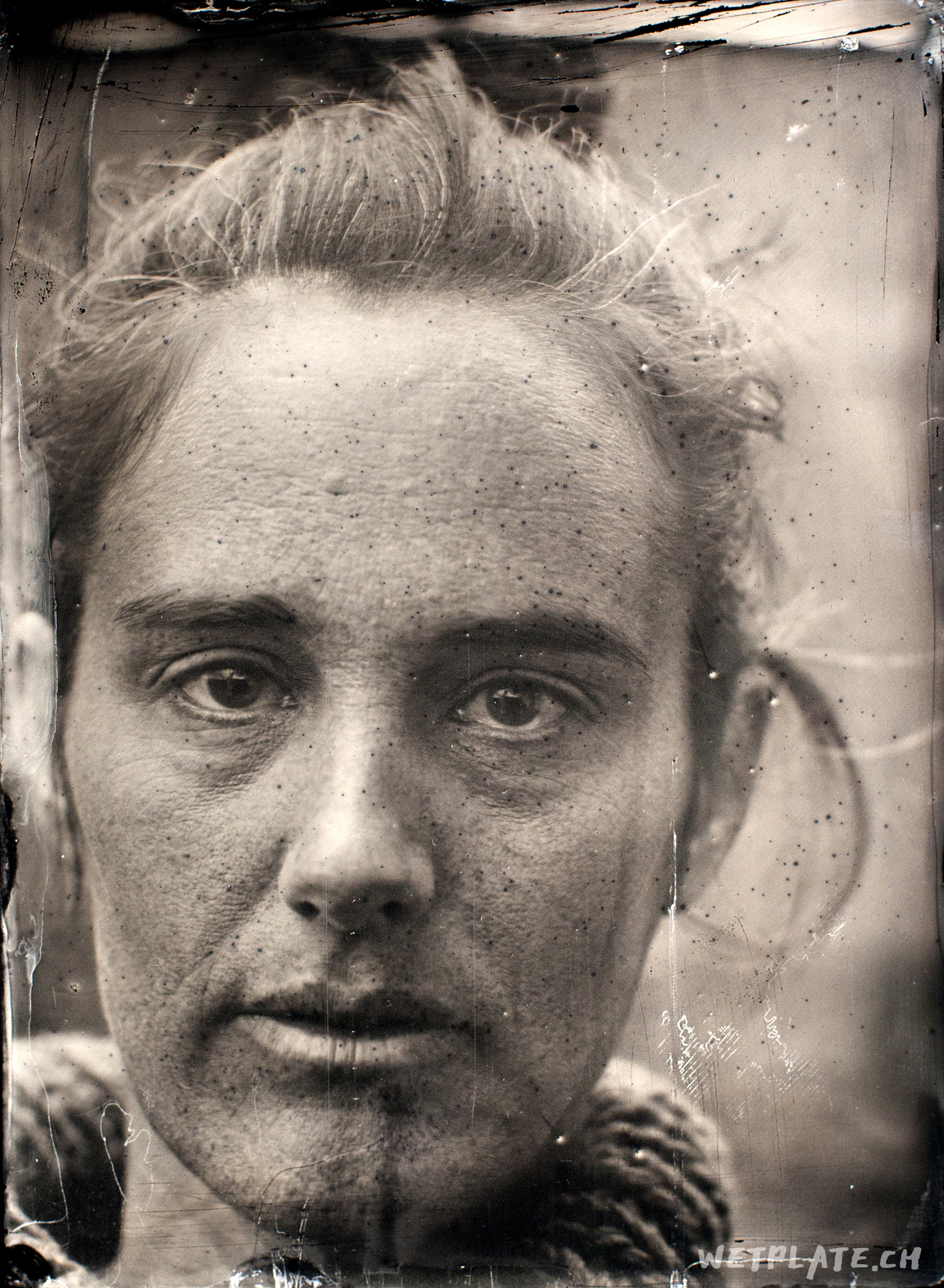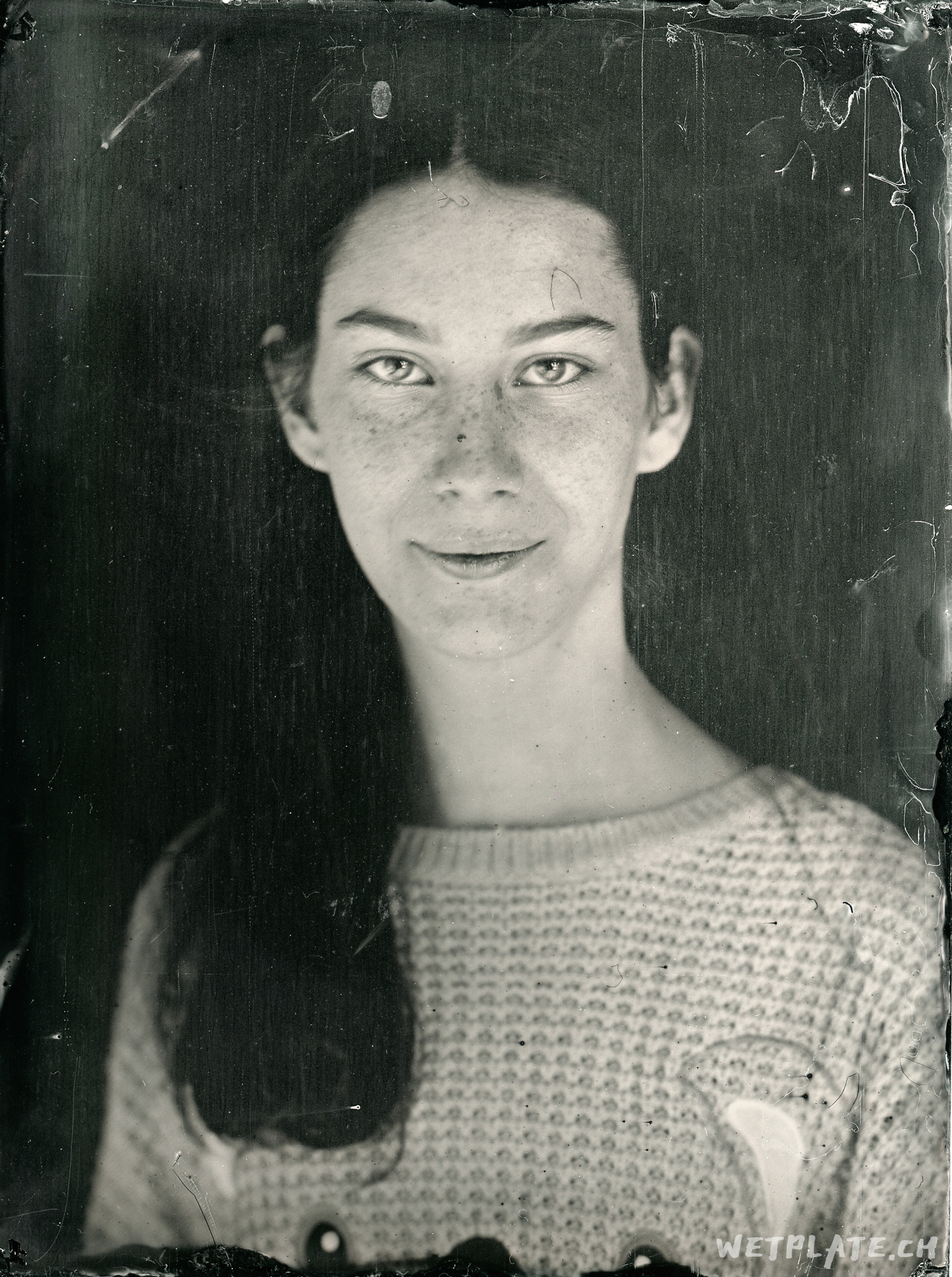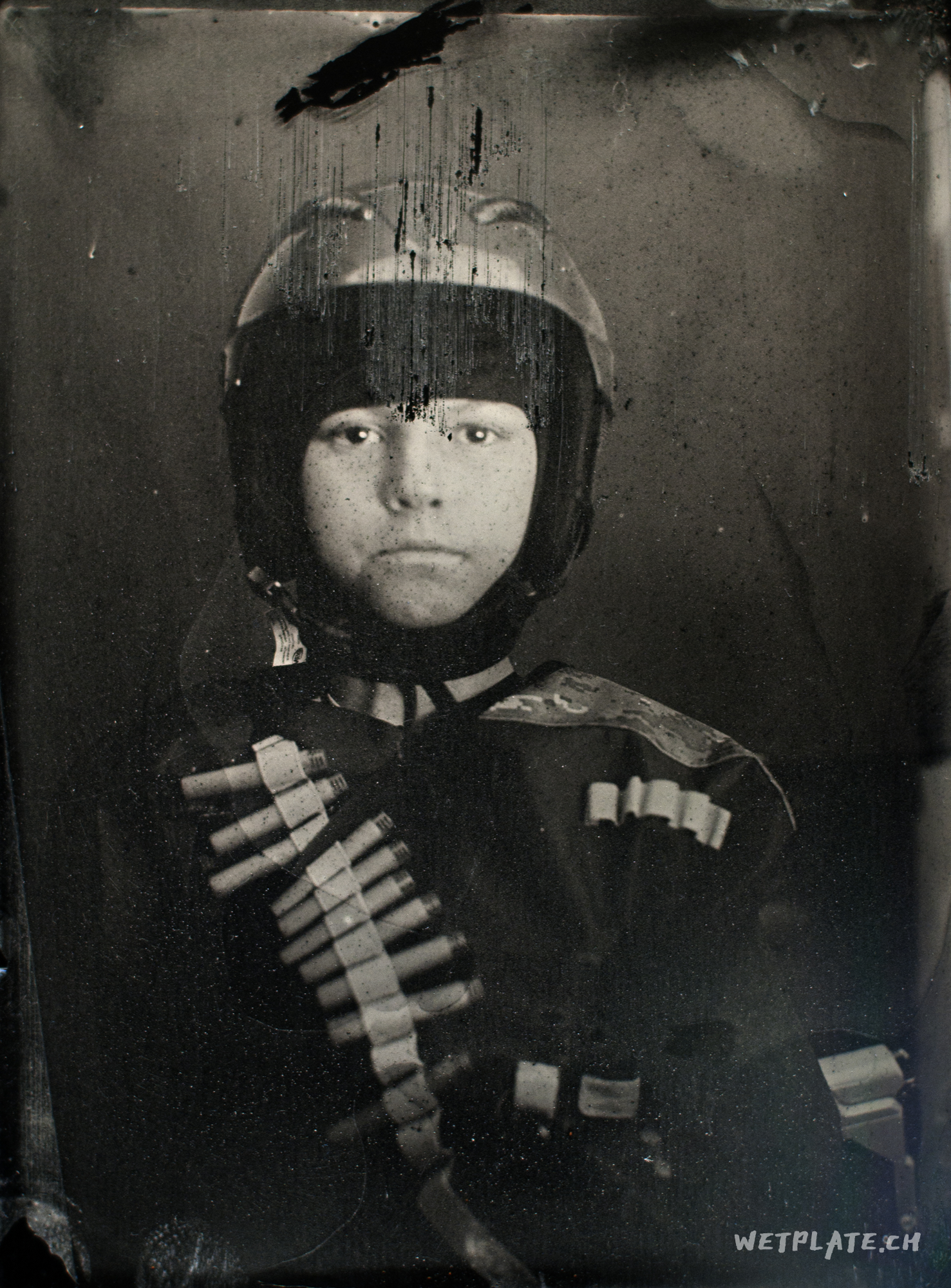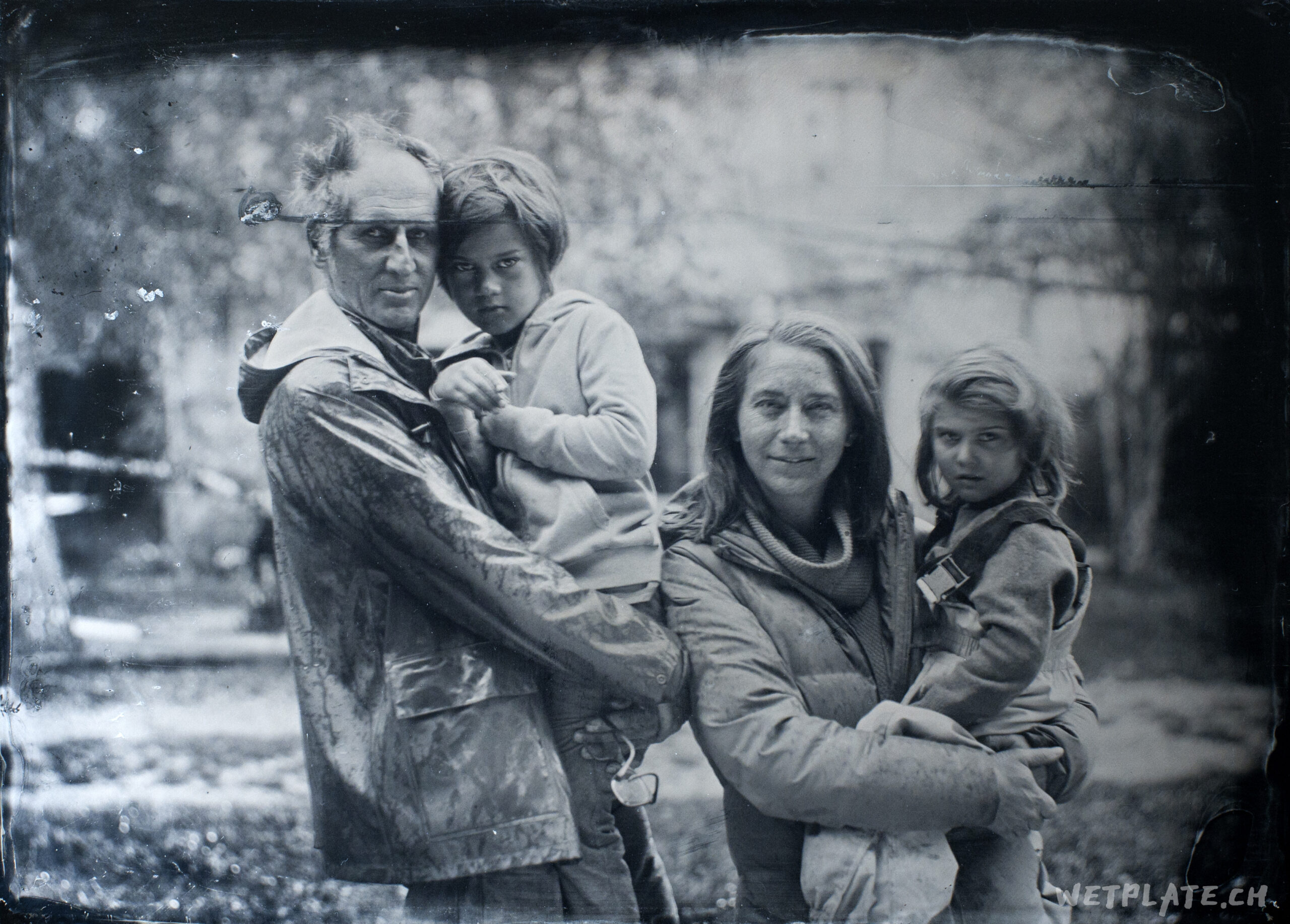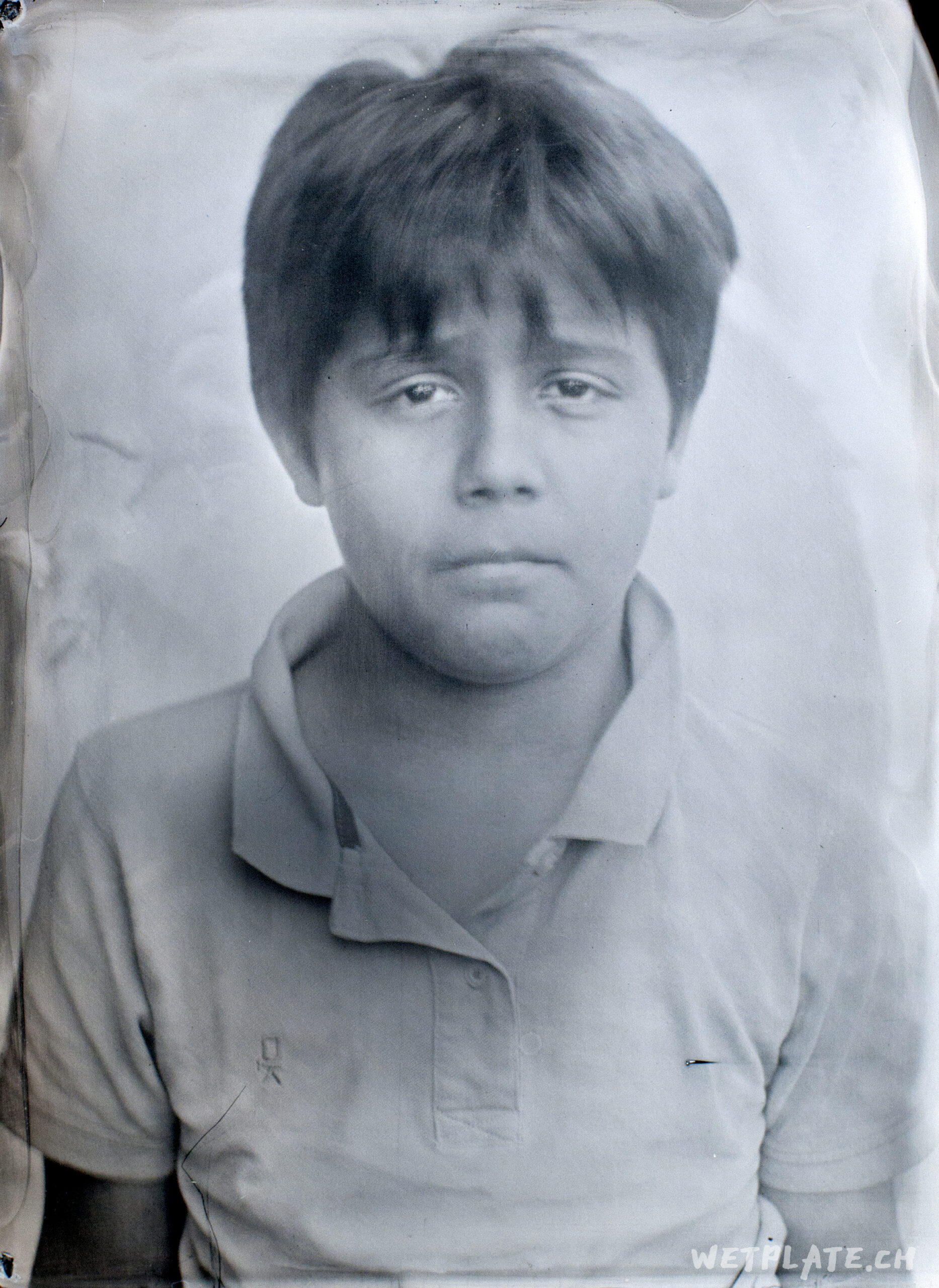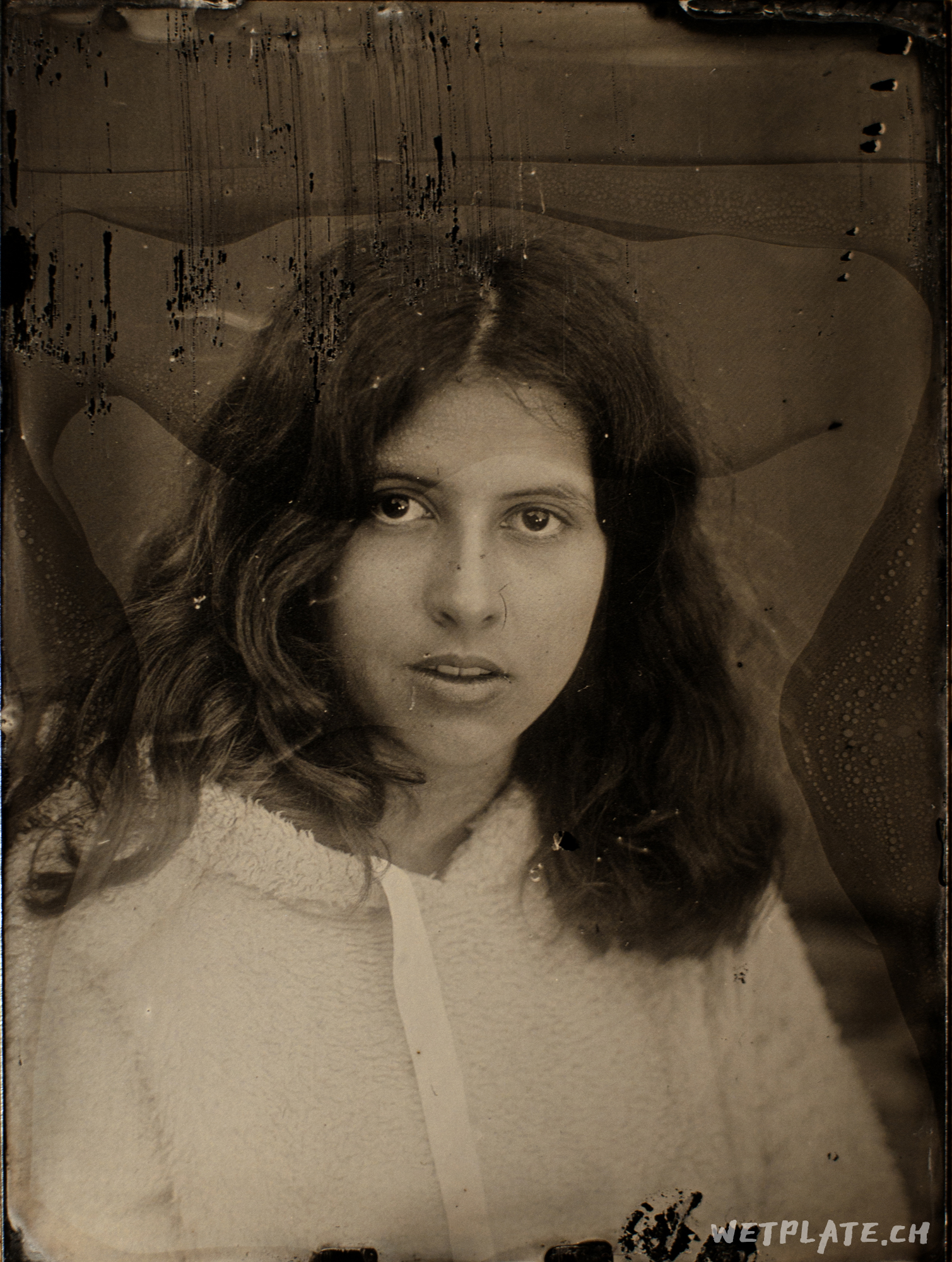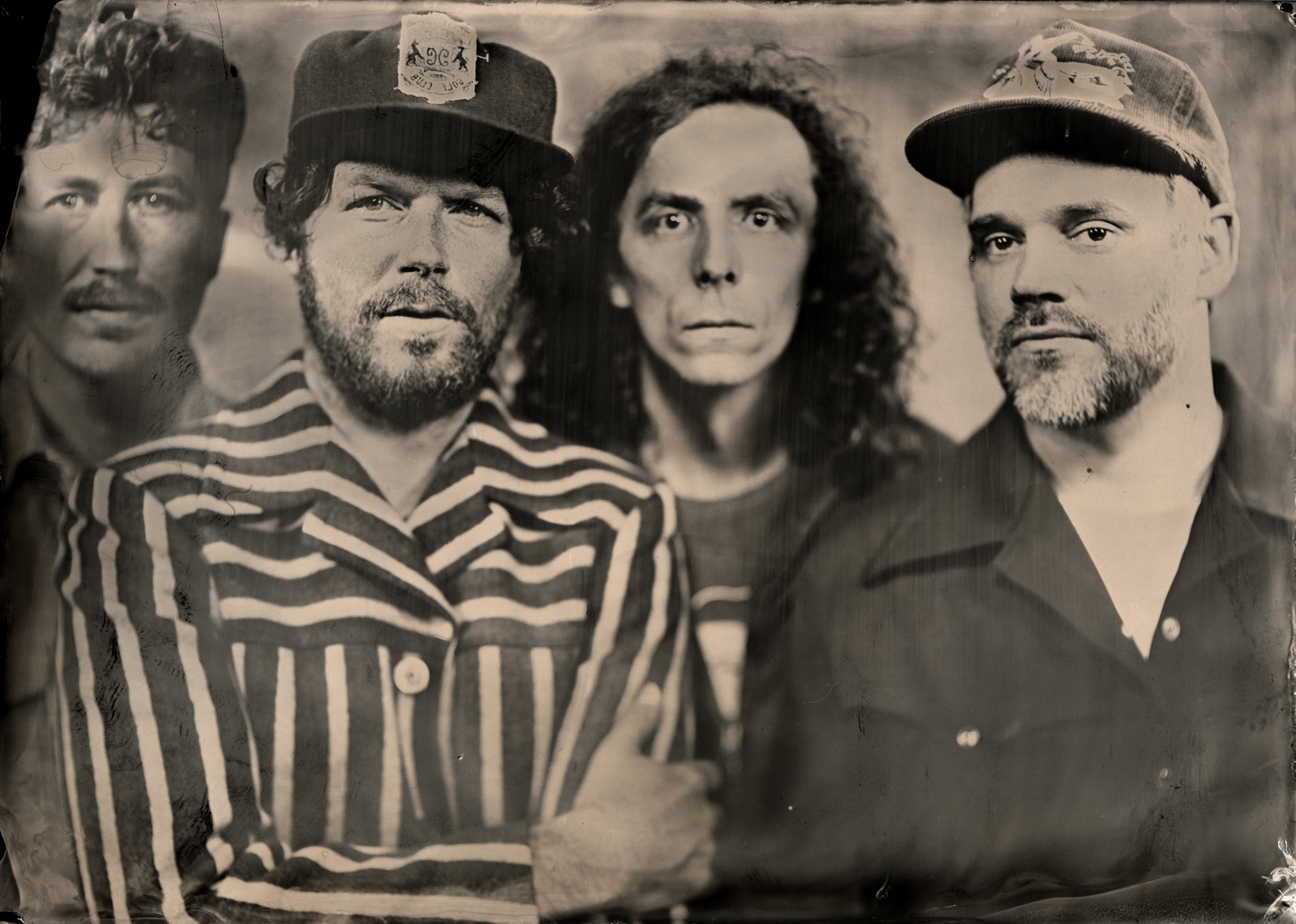Wetplate.ch is the open platform for exchange and collaboration of Swiss photographers and artists using 19th century historical analogue photo processes.
These historical photographic Processes are referred to as Ambrotype, Tintype, Collodion Wetplate Photography, Alumnitype and others.
We are a not-for-profit organization promoting and advancing vintage original photo techniques and ancient chemical development processes. Most of us are Professionals that make a living with other activities than wetplate and we can – as much as possible – accommodate for portrait sessions with interested folks. This process is complicated and expensive. Talk to us if you want to have your picture plate taken.
| CONTACT |
Wetplate.ch is the open platform for exchange and collaboration of Swiss photographers and artists using 19th century historical analogue photo processes.
These historical photographic Processes are referred to as Ambrotype, Tintype, Collodion Wetplate Photography, Alumnitype and others.
We are a not-for-profit Organization promoting and advancing vintage original photo techniques and ancient chemical development processes. Most of us are Professionals that make a living with other activities than wetplate and we can – as much as possible – accommodate for portrait sessions with interested folks. This Process is complicated and expensive. Talk to us if you want to have your picture plate taken.
| CONTACT |
Featured Work
This is what it looks like
The Process
Wet Plate Photography is a vintage back & white process from 1851 where a liquid cotton emulsion is poured onto a glass or metal plate and light sensitized in a silver nitrate bath. The plate is then – while still wet – exposed in an ancient (wood) plate camera. Exposed at ISO 1 (!) it is developed and placed in a fixative that will prevent it from fading. The result is one single reverse positive image that – when varnished in sandarak – has a lifespan of hundreds of years. Every plate is unique – there is only one copy.
The Wet Plate Collodion photographic process was invented in 1851 by British sculptor and inventor Frederick Scott Archer. Revolutionary at the time, this process made it possible to capture an image on the surface of a piece of glass. Archer then named this process Ambrotype. This process is complicated, time-consuming, and the chemicals involved can be dangerous to the photographer. Photographs by the collodion wet plate process are sharp like the daguerreotype, easily reproducible like the calotype, and enabled photographers at the time to dramatically reduce exposure times. Archer however did not patent this process, and consequently received no financial benefit from it. He died in poverty in 1857.
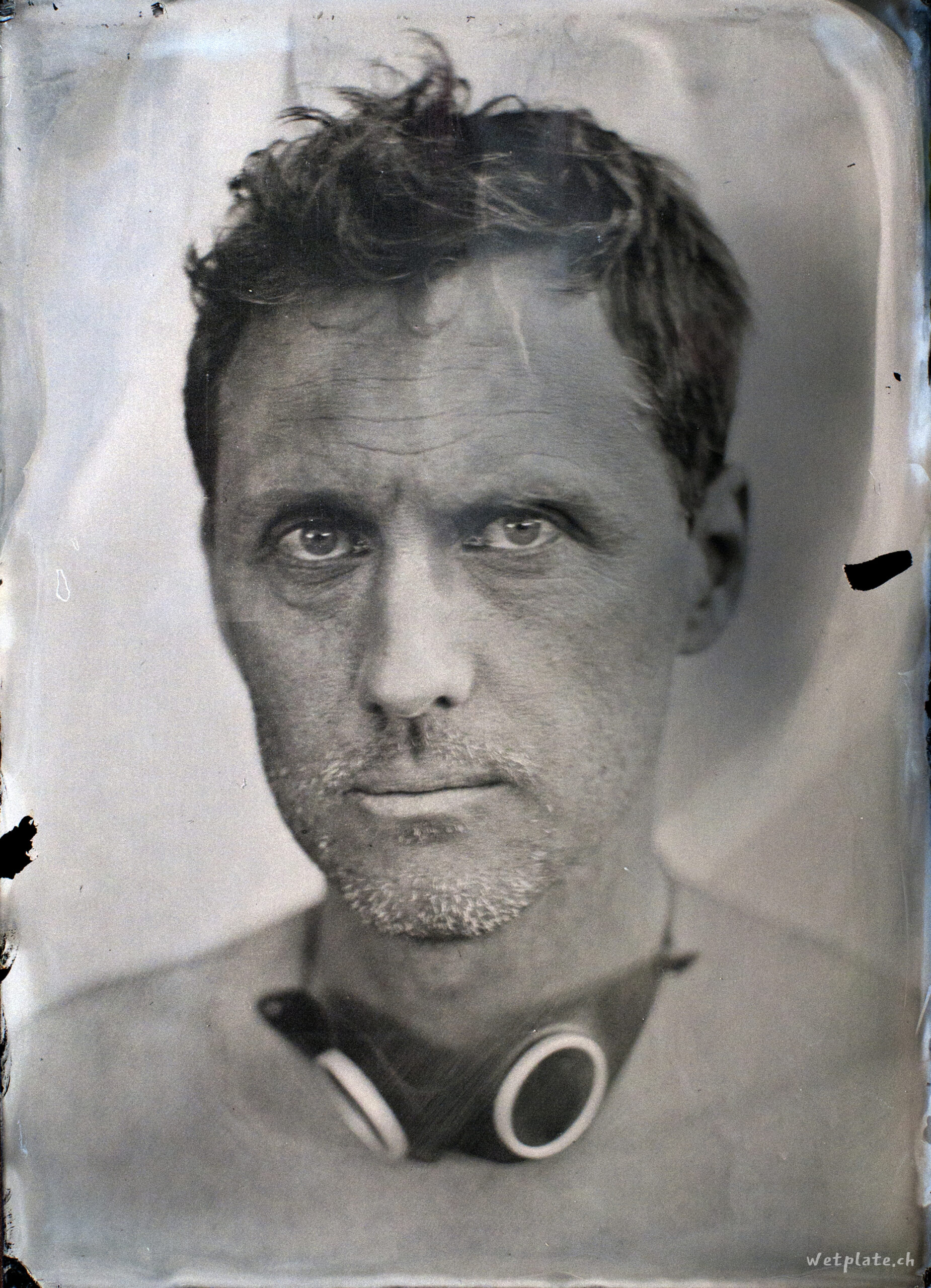
Tintype Gallery
Browse the Swiss Wetplate Portfolio
Join the Photographers
Meet and work with the award winning wetplate photographers
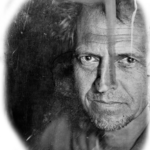
Wim van der Helm
Wim van der Helm is a tintyper and a professional documentary photographer. He is alumni from the documentary photography class at the International Center of Photography ICP in New York and received a Helge Hummelvoll Scholarship from the University of Missouri School of Journalism. During his time at the ICP in New York he was the assistant of Eli Reed at Magnum Photos and worked closely with Brian Young in his black-and-white lab in Manhattan on non-digital analogue photo projects. Wim van der Helm is winner of the fotodocs contest of the Museum Boijmans Van Beuningen in Rotterdam. His work has been published in Newspapers, Books and Exhibitions internationally.
Wim van der Helm on Instagram
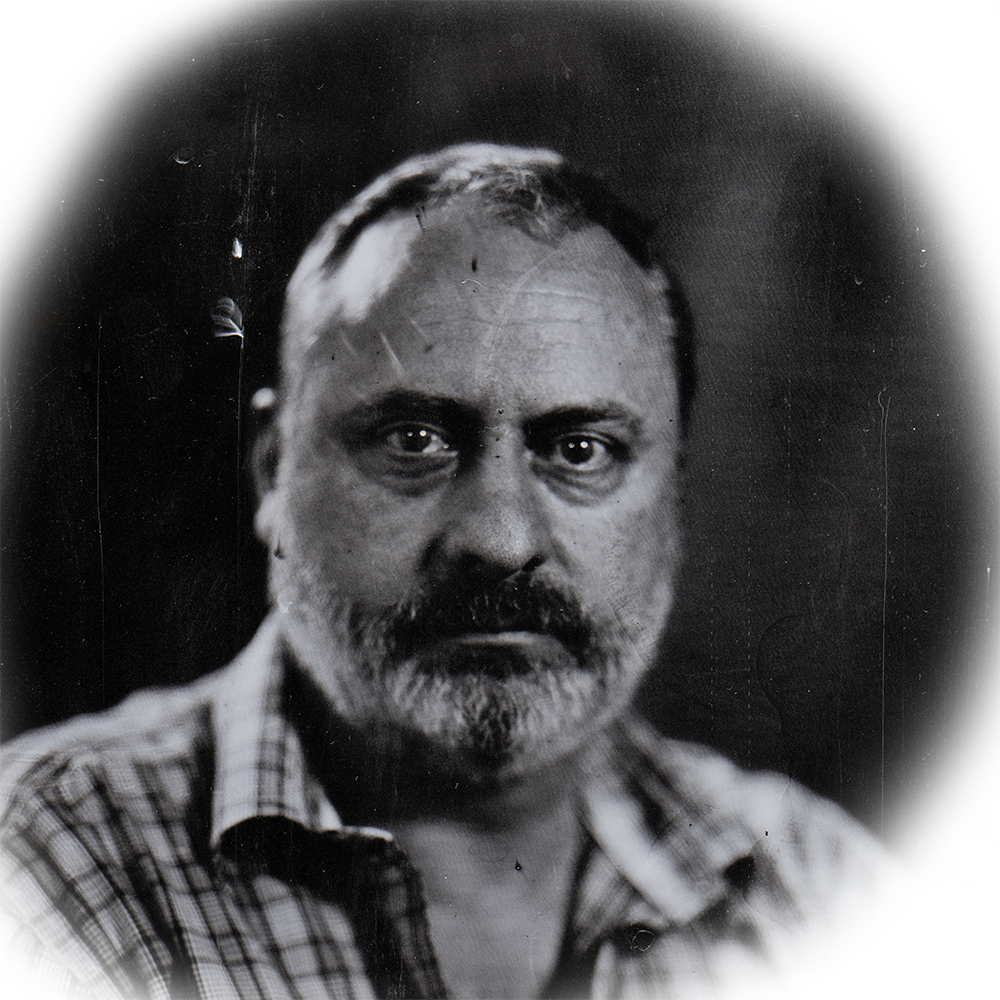
Steeve Henchoz
Steeve Henchoz is a photo- and videographer with a wide background visual arts - working in the field for decades. Recently Steeve has been specializing in vintage black and white processes involving various large format cameras and wetplate collodion on glass and alternative materials.
Steeve Henchoz on Instagram
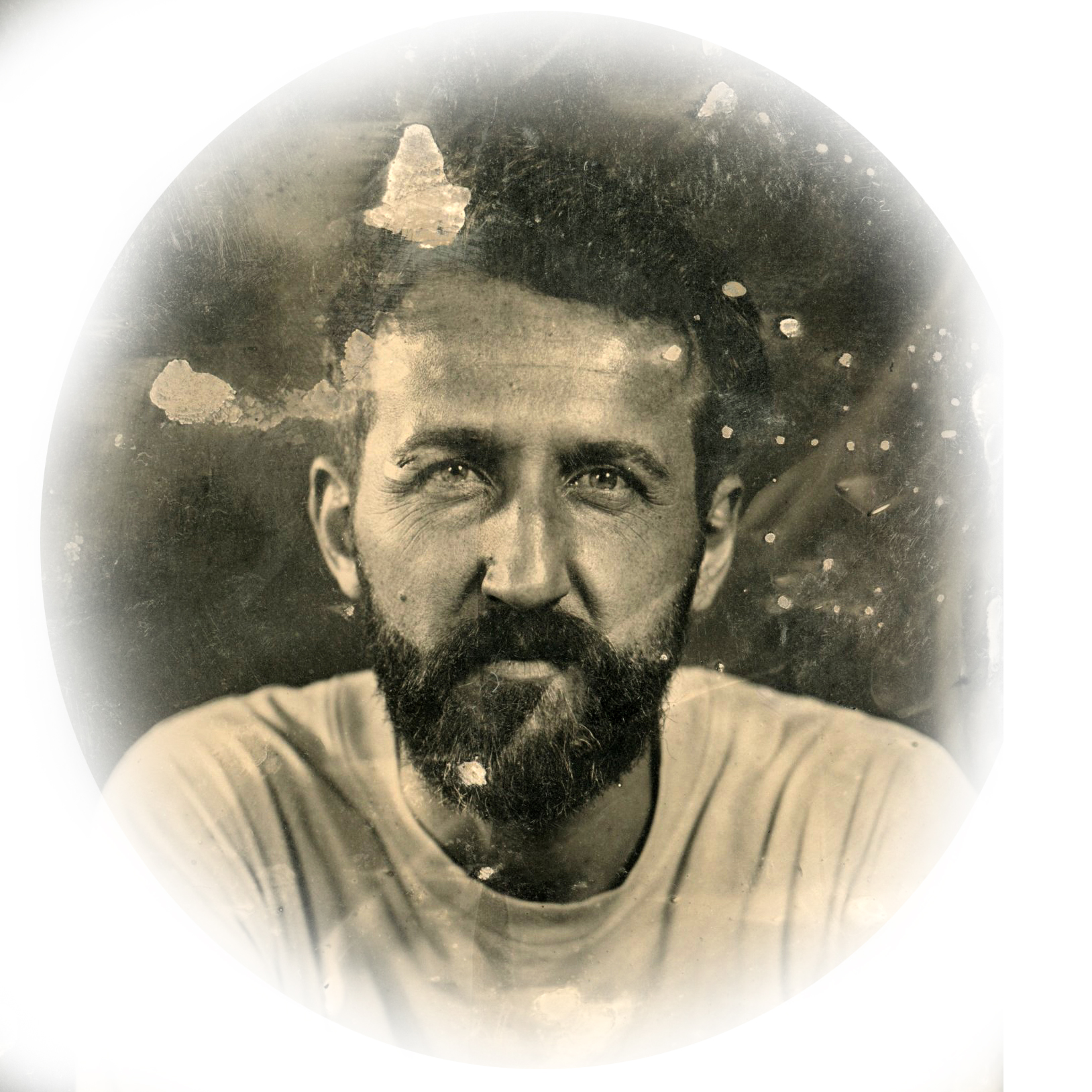
Maciej Wałkiewicz
Meet Maciej Wałkiewicz, a photographer with a passion for capturing emotions through the art of photography. Maciej has a love for the traditional and uses the old technique of wet plate collodion and film photography to create stunning portraits that truly bring his subjects to life. Every glass photo is handcrafted with antique techniques and materials to create a one-of-a-kind masterpiece.
Maciejs Walkiewicz on Instagram

André Abravanel
André Abravanel is a social anthropologist with a specialization in visual arts and genealogy. He is passionate about studying the visual techniques and materials that cultures use to capture what they consider important.
"I feel fortunate to have been born in this century and to be able to witness the transition and development of visual arts, observing their advancements and impact on humanity," says Abravanel.
One of the techniques that fascinates him the most is the wet collodion process. This method allows him to imbue his photographs with an energy that transcends merely capturing light and shadow on glass. The physical and chemical techniques involved give him complete control over his photographic results. Abravanel's work not only reflects his deep understanding of visual culture but also his commitment to mastering the craft of photography. His unique approach combines traditional methods with a contemporary perspective, offering a profound insight into the interplay between culture, technology, and human expression.
André Abravanel on Instagram
Frequently Asked Questions
Please contact us with whatever topic about vintage photography you may have. However, please refer to the FAQs below for the most common questions we receive.
FAQ
